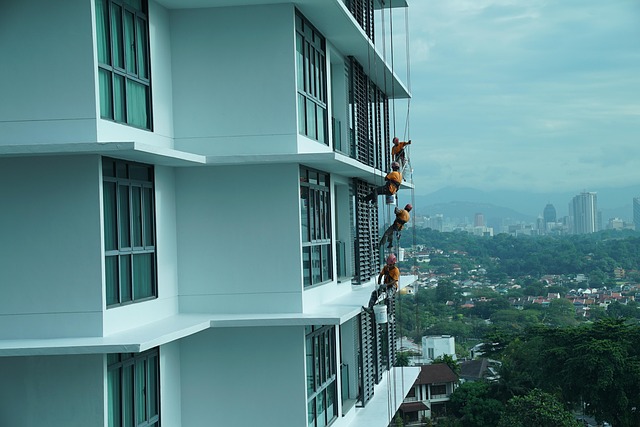A comprehensive analysis of market trends and local dynamics is vital for real estate investors planning construction and updates. Monitoring sales data, rental rates, and demographic shifts informs strategic decisions on property improvements, aligning with current trends. Engaging with tenants to understand their needs enhances community equity and satisfaction. Strategic planning focusing on sustainability, market demands, location, and environmental regulations builds equity and appeals to eco-conscious buyers and tenants.
In today’s competitive real estate landscape, planning future updates and building equity are crucial for property success. This comprehensive guide delves into the strategies necessary to achieve both. By assessing market trends and neighborhood dynamics, prioritizing upgrades based on resident needs, and developing a long-term sustainability plan, investors and property managers can create thriving spaces that hold value over time. Implement these steps to ensure your real estate ventures remain competitive and profitable.
Assess Market Trends and Neighborhood Dynamics

Before diving into future updates and construction plans, it’s crucial to assess market trends and real estate dynamics within the neighborhood. This involves keeping a close eye on recent sales data, rental rates, and demographic shifts. By understanding the demand for various property types, you can make informed decisions about what improvements will be most beneficial in increasing property equity.
For instance, identifying emerging trends like the growing preference for smart homes or sustainable living spaces can guide your update strategy. Additionally, considering neighborhood amenities and infrastructure developments allows you to align your plans with the area’s evolving needs. This holistic approach ensures that your real estate investments not only maintain but also enhance their value over time.
Prioritize Upgrades Based on Resident Needs and Feedback

In the real estate sector, understanding resident needs is paramount for successful property management and future updates. Engaging with tenants to gather feedback on their living experiences allows developers and property managers to prioritize upgrades and renovations effectively. By listening to residents’ suggestions, you can identify key areas that require attention, ensuring that investment in the property aligns with what matters most to those who call it home.
This strategic approach not only enhances resident satisfaction but also builds equity within the community. Prioritizing upgrades based on feedback creates a sense of belonging and fosters a positive living environment. It demonstrates to residents that their voices are valued, leading to increased loyalty and a stronger connection to the property, which is beneficial for both real estate investors and long-term tenants alike.
Develop a Long-Term Sustainability Plan for Equity Building

In the realm of real estate, building equity is a strategic and long-term goal that requires a well-thought-out plan. Developers and investors should Develop a comprehensive sustainability strategy focused on equity growth, aligning with industry trends and market demands. This involves careful consideration of factors such as location, property type, and demographic shifts to ensure investments are made in areas with high potential for capital appreciation and rental yield.
A key aspect is to stay updated with environmental regulations and community expectations, incorporating sustainable practices into development plans. By adopting eco-friendly materials, energy-efficient systems, and smart home technologies, real estate projects can attract environmentally conscious buyers and tenants, enhancing their market value over time. This approach not only contributes to a greener future but also ensures the longevity and resilience of investments in a rapidly changing market.






